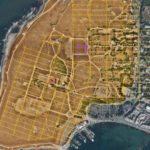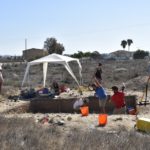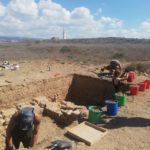-
Principal Investigator: Prof. Ewdoksia Papuci-Władyka
Contact:
- e.papuci-wladyka@uj.edu.pl
- e.papuci-wlady@uw.edu.pl
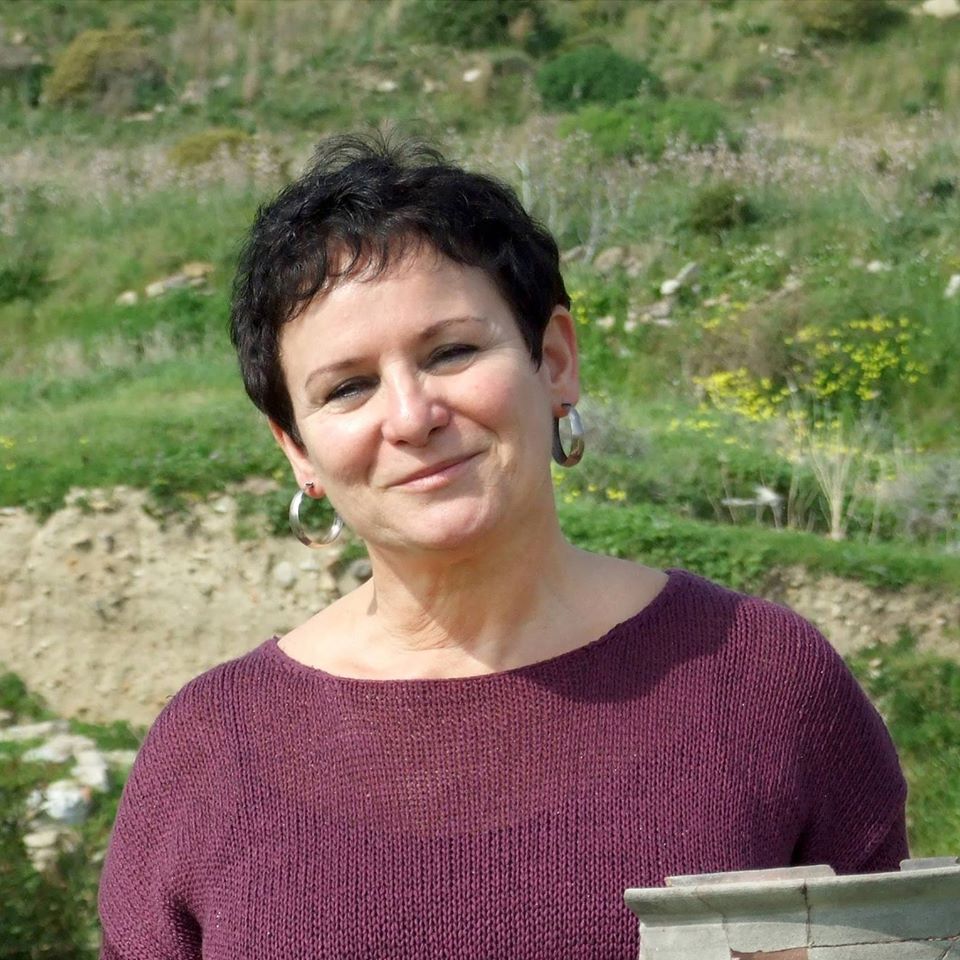
Project consortium:
Jagiellonian University, Institute of Archaeology (leader), University of Warsaw, Polish Centre of Mediterranean Archaeology and Warsaw University of Technology, Faculty of Geodesy and Cartography.
Project term:
July 2020 to July 2022 (extended to July 2023)
Budget:
PLN 2 180 042
Funding:
National Science Centre in Poland, OPUS 18, 2019/35/B/HS3/02296

-
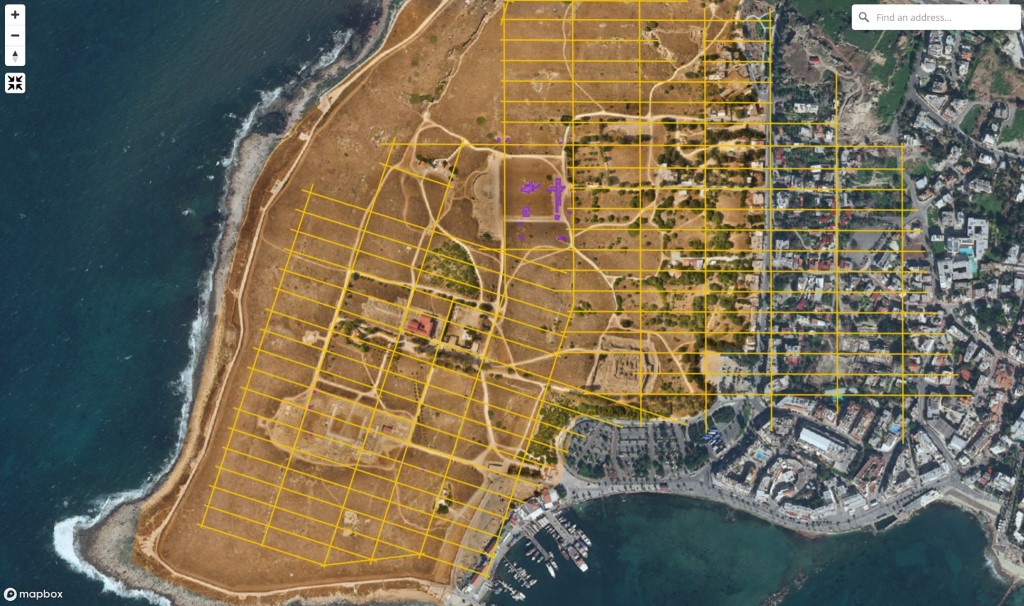
MA-P Maloutena and Agora in the layout of Paphos: modelling the cityscape of the Hellenistic and Roman capital of Cyprus
Keywords: Paphos, Cyprus, Hellenistic period, Roman period, urban landscape, procedural modelling
The aim of the project is to recreate the layout of the ancient city of Nea Paphos, located on the south-western coast of Cyprus, entered on the UNESCO heritage list since 1980. The city was founded at the turn of the 4th/3rd century BC. and served in antiquity as the main center (capital) of the island. As one of the most important urban centers in Cyprus, it has become the subject of interest of many modern researchers from different countries. An important role in the history of Paphos research was also played by archaeologists from Poland, discovering since 1965 the remains of a rich residential district called Maloutena, and since 2011 a representative square in the city center – Agora. In 1990, J. Młynarczyk, a professor at the University of Warsaw, published research results that were very important from the point of view of archeology and urban planning of the city, in which, based on the discovered remains of buildings and streets and many other data, she proposed a reconstruction of the plan of the ancient city of Nea Paphos modeled on on the so-called hippodaean (from Hippodamos Greek town planner from Miletus). After more than 30 years after the publication of this study, it is necessary to verify previous findings based on new discoveries and precision imaging technologies at the disposal of today’s archaeology.
The MA-P project is carried out by an interdisciplinary research team composed of representatives of such fields as archeology (including ceramology and numismatics), geophysics, architecture and specialists in remote sensing research, procedural modeling and spatial analysis. This team, based on the existing information collected on the basis of a source query and new data obtained during the project, undertook to reconstruct the layout of streets and buildings functioning in ancient Paphos in various historical periods, with particular emphasis on the area of the residential district (Malutena) and the heart of the ancient city – Agora. In addition, a team of archaeologists with the participation of specialists in the analysis of archaeological artefacts, primarily pottery and coins, which allow archaeological remains to be dated, conducts verification studies of the layers examined so far and performs new surveys in selected key places. The purpose of the latter is to provide the missing information necessary to reconstruct the original layout of the city and to determine the moment of possible changes and shifts in the layout of streets and building quarters caused by reconstructions or damage (mainly due to numerous earthquakes).
The result of the integrated research results will be the reconstruction of the city landscape and buildings in the form of 3D models. The obtained 3D reconstructions will then be subjected to spatial analyzes in order to determine the relationship between the layout of buildings and streets and the functioning of the city in terms of visibility, population flow, potential number of inhabitants, etc. The MA-P project implements an innovative methodology for Cyprus, but successfully used at other archaeological sites in the Mediterranean Basin (eg Pompeii or Carnuntum). Reconstruction of the ancient buildings of the city of Nea Paphos and reconstruction of the original plan of the city will be an important supplement to the existing research, allowing to look at the city from a completely new perspective, revealing its actual size and functioning, giving an even better idea of the life of the ancients.
Project collaboratorsDr Urszula Wicenciak-Núñez – project coordinator from Polish Centre of Mediterranean Archaeology UW
Eng. Wojciech Ostrowski –project coordinator from Warsaw University of TechnologyDr Łukasz Miszk – post-doc in grant, coordination of works in the field
Dr Małgorzata Kajzer – post-doc in grant, ceramologist
Dr Eng. arch. Anna Kubicka-Sowińska – post-doc in grant, architect
Dr Eng. Anna Fijałkowska – geoinformatician
Dr Paweł Lech – scholarship holder in grant, coordination of works in the field, GIS, web page coordination
Eng. Paulina Zachar (Konarzewska) – scholarship holder in grant, geoinformatician
Eng. Artur Nowicki – scholarship holder in grant, procedural modeling specialist (2020-2021)
Jerzy Oleksiak, MA – scholarship holder in grant, ceramologist
Kamila Niziołek, MA – scholarship holder in grant, ceramologist
Michał Michalik, MA – scholarship holder in grant, coordination of works in the field, web page coordination
Jakub Modrzewski – scholarship holder in grant (2022), geoinformatician
Eng. Łukasz Wilk – grant associate, RTI specialistCollaborators from Institute of Classical Archaeology, Hamburg University: Prof. Martina Seifert, Nikola Babucic (geophysical research)
Other collaborators: Łukasz Bąk, Aleksandra Brzozowska Jawornicka, Anna Wencel, Barbara Zając, Szymon Jellonek, Kamil Kopij, Paweł Gołyźniak, Jacek Karmowski, Aleksandra Milczuk, Agata Głowacka, Sebastian Bała, Michał Wiktorzak
Associated events- March and May 2022 Collaborative archaeology and public engagement events in Paphos
- April 20 to May 15 and September to 19 October 2022 – Third research season
- October 2021: powstanie Stacji Badawczej CAŚ w Pafos
- March 18 to July and August 18 to October 17 2021 – Second research season
- October 15, 2020 55 years of Polish Excavations in Cyprus
- October 1 to November 1, 2020 – First research season
- October 1 to November 1, 2020 – First research season
Lectures and conference presentations06.12.2022 E. Papuci-Władyka, guest lecture in Institute of Classical Archaeology, Hamburg University, Digging Paphos – the UNESCO Heritage site: some results
01-03.12.2022 M. Michalik, presentation, The shift in water pipe production and the transition in water supply. A study of pipelines from Paphian Agora: a preliminary project report, POCA: 19TH MEETING OF THE POSTGRADUATE CYPRIOT ARCHAEOLOGY, Graz Uniwersytet
01-03.12.2022 K. Niziołek, M. Kajzer, presentation, No filter. Perforated fine ware pottery recorded during the Polish excavations in Nea Paphos, POCA: 19TH MEETING OF THE POSTGRADUATE CYPRIOT ARCHAEOLOGY, Graz Uniwersytet
08-10.11.2022 M. Michalik, What can the water well tell us? Preliminary considerations on the use of underground water in Nea Paphos based on Data from the Agora, Nea Paphos Colloquium III conference, Athens
08-10.11.2022 E. Papuci-Władyka, Ł. Miszk, A. Kubicka-Sowińska, W. Ostrowski, presentation, Where the streets have no name. Ma-P: preliminary results of the new research on the layout of Nea Paphos, Nea Paphos Colloquium III conference, Athens
06-08.10.2022 Ł. Wilk, M. Kłębowski, M. Bełdyga, P. Lech, W. Ostrowski, poster, Application of a stand-alone RTI measuring system with integrated camera in Cultural Heritage digitisation, 7th Symposium Archaeological Research&New Technologies, Kalamata, Greece
06-08.10.2022 Ł. Miszk, J. Modrzewski, Ł. Wilk, W. Ostrowski, P. Lech, presentation, Monitoring of archaeological excavations using photogrammetric techniques, 7th Symposium Archaeological Research&New Technologies, Kalamata, Greece
25.09.2022 J. Oleksiak, presentation, Catching the Big Fish – Republican Fish-Sauce Containers from Nea Paphos (Cyprus), 32nd International Conference of the Rei Cretariae Romanae Futores, National and Kapodistrian University of Athens, Athens
28.08.-09.09.2022 Miszk Ł. Kubicka -Sowińska A., Papuci-Władyka E., Brzozowska-Jawornicka A., Ostrowski W., Michalik M., presentation, Phenomena of re-use and integration of the urban grid in the cityscape of Nea Paphos, capital of Hlelnistic-Roman capital of Cyprus, EAA conference in Budapest
28.08.-09.09.2022 Miszk Ł., Ostrowski W., Papuci-Władyka E., presentation, From a pencil to the 3D model, EAA conference in Budapest
28.08.-09.09.2022 P. Lech, Ł. Wilk, M. Kłębowski, M. Bełdyga, W. Ostrowski., presentation, Old Tech’s New Wave. Why archaeologists should get familiar with RTI one more time. A Nea Paphos example, EAA conference in Budapest
28.08.-09.09.2022 M. Michalik, Ł. Miszk, presentation, Where does the water go? Dreinage challanges and solutions on the Agora in Nea Paphos, Cyprus, EAA conference in Budapest
23-24.06.2022 A. Brzozowska-Jawornicka, A. Kubicka-Sowińska, presentation, On the treail of lost buildings of the Paphian Agora, Table ronde: Houses of people Houses of goods, Warsaw UW
23-24.06.2022 E. Papuci-Władyka, Ł. Miszk, presentation, Houses for gods: possible cultic features of Nea Paphos detected by Polish research, Table ronde: Houses of people Houses of goods, Warsaw UW
23-24.06.2022 E. Papuci-Władyka, A. Kubicka-Sowińska, presentation, MA-P project: 3D reconstruction of the beginning of the regular planned city of Nea Paphos, Table ronde: Houses of people Houses of goods, Warsaw UW
08-10.06.2022 M. Michalik, M. Kajzer, U. Wicenciak-Nunez, K. Niziołek, J. Oleksiak, A. Kubicka-Sowińska, Ł. Miszk, W. Ostrowski, E. Papuci-Władyka, presentation, Preliminary remarks on the stratigraphy and pottery on the Trial Trench III located in the Maloutena district, conference Poles in the Near East
22.03.2022 E. Papuci-Władyka, guest lecture in Polish Archaeological Institute at Athens, Digging the UNESCO World Heritage Site: Polish past and present research in Nea Paphos on Cyprus (on-line)
21.02.2022 E. Papuci-Władyka, lecture Trójwymiarowa rekonstrukcja krajobrazu miejskiego antycznej Paphos – wstępne wyniki badań projektu MA-P Uniwersytetu Jagiellońskiego, Uniwersytetu Warszawskiego i Politechniki Warszawskiej, Session of the Commission of Archeology of the Mediterranean Countries of the Polish Academy of Arts and Sciences
20.01.2022 E. Papuci-Władyka, lecture Nowoczesne modelowanie krajobrazu miejskiego Pafos, stolicy hellenistycznego i rzymskiego Cypru: nowy projekt Uniwersytetu Jagiellońskiego, Uniwersytetu Warszawskiego i Politechniki Warszawskiej, Session of the Committee on Ancient Culture of the Polish Academy of Sciences17-20.11.2021 E. Papuci-Władyka, U. Wicenciak-Nuñez, W. Ostrowki, Ł. Miszk, M. Kajzer, presentation, Integrated archaeological, architectural and urbanistic research using modern methodology in service of the 3D reconstruction of Nea Paphos cityscape, Annual Meeting of ASOR conference, Chicago
17-20.11.2021 A. Kubicka, A. Fijałkowska, P. Konarzewska, W. Ostrowski, A. Nowicki, Ł. Miszk, E. Papuci-Władyka, presentation, Reconstructing the Urban Space of Nea Paphos through Comparison with Regularly Planned Mediterranean Cities Using 3D Procedural Modelling and Network Analysis, Annual Meeting of ASOR conference, Chicago
17-20.11.2021Ł. Miszk, presentation, Between the Ptolemaic kingdom, the Roman Empire, and self-government polis. Development of the Nea Paphos Agora as a reflection of power institutions in the Hellenistic and Roman Cyprus, Annual Meeting of ASOR conference, Chicago
11.2021 Ł. Miszk and E. Papuci- Władyka, presentation, Looking for a second harbour in Nea Paphos – a view after five years of research, North meet East III conference, Hamburg University
14-18.06.2021 Anna Fijałkowska, Paulina Konarzewska, Anna Kubicka, Wojciech Ostrowski, Artur Nowicki, Łukasz Miszk, Ewdoksia Papuci-Władyka, presentation, Towards discovering the similarities of regular Mediterranean cities using network analysis, CAA DIGITAL CROSSROADS conference
08-10.06.2021 Panel on Cyprus in the conference Poles in the Near East Between courte durée and moyenne durée. Transition in the archaeology of Hellenistic and Roman Cyprus whose organisers were Prof. Ewdoksia Papuci-Władyka, Dr. Małgorzata Kajzer, Dr. Łukasz Miszk and Michał Michalik M.A.
12.05.2021 E. Papuci-Władyka, lecture for National Museum in Warsaw, 55 lat polskich badań archeologicznych w Nea Pafos, stolicy starożytnego Cypru
05-07.05.2021 E. Papuci-Władyka, presentation, Modern Archaeology in the Service of Society: The case study of Paphos, ancient capital of Cyprus, European Humanities Conference (on-line) organised by UNESCO, LisbonProject bibliographyKubicka-Sowińska A., Miszk Ł., Konarzewska P., Fijałkowska A., Ostrowski W., Modrzewski J., Nowicki A., Papuci-Władyka E., (In press), Reconstructing the urban fabric of Nea Paphos by comparison with regularly planned Mediterranean cities, using 3D Procedural Modelling and spatial analysis, BASOR
Links
About research in Nea Paphos
Polish Archaeology in Cyprus – web page
Polish Archaeology in Cyprus – Facebook
Warsaw University of Technology – Facebook
Jagiellonian University in Kraków – Facebook
Polish Centre of Mediterranean Archaeology University of Warsaw – FacebookGallery:
-
Fig.1. Correcting streets grid of Nea Paphos, MA-P project Archive
-
Fig.2. Looking for insula width 2021, Maloutena Trial Trench V (fot. E. Papuci-Władyka)
-
Fig.3. In search of street 11, 2022, Maloutena Trial Trench X (fot. E. Papuci-Władyka)
-
Fig.4. General view of Maloutena site, 2021, Villa of Theseus and „Hellenistic” House (fot. E. Papuci-Władyka)
-
Fig.5. Looking for street M, east of Agora, 2022, Trial Trench XV (fot. E. Papuci-Władyka)

